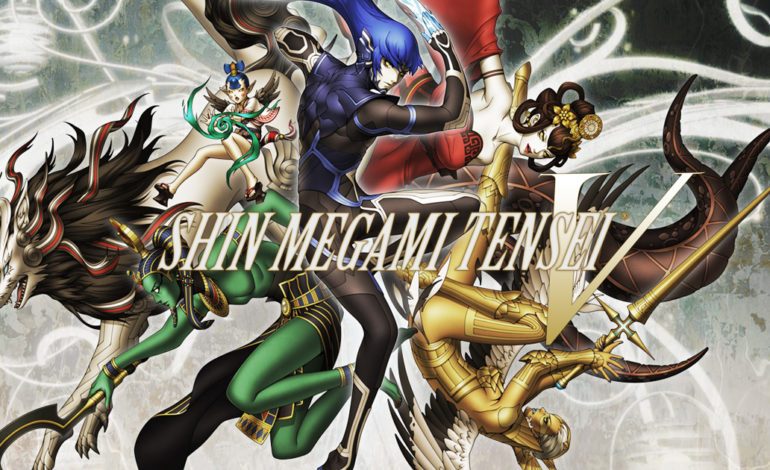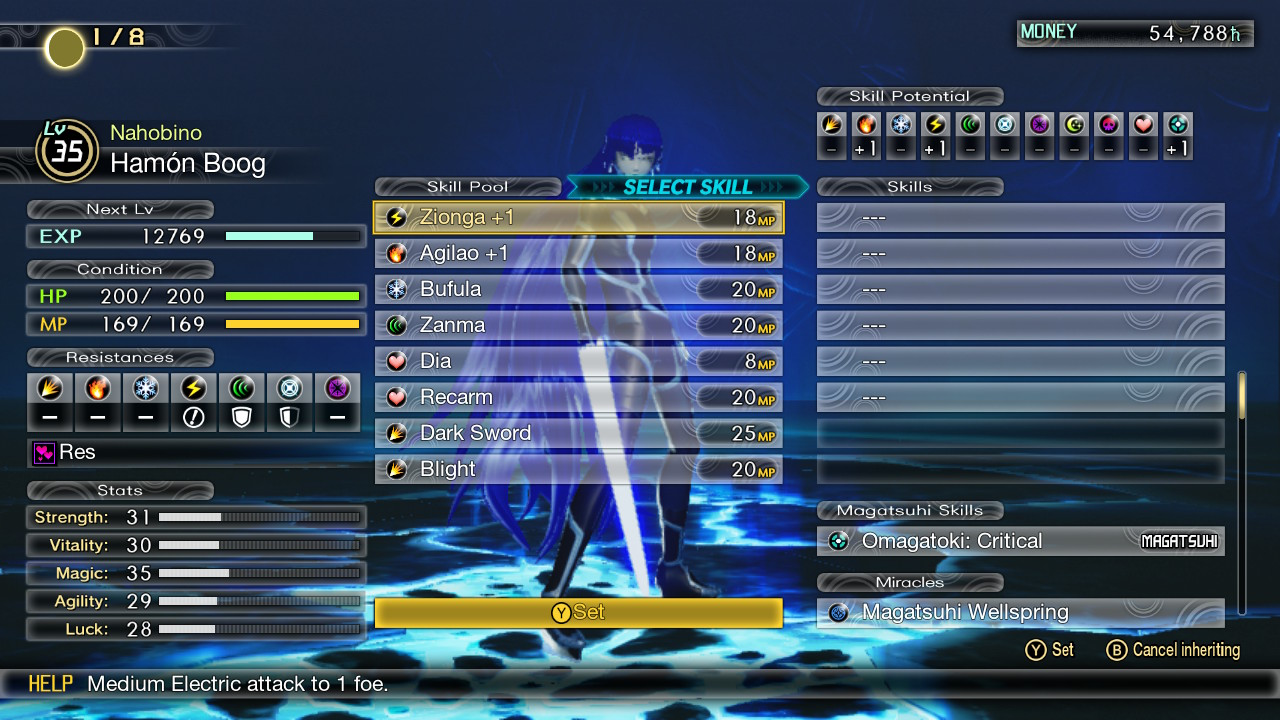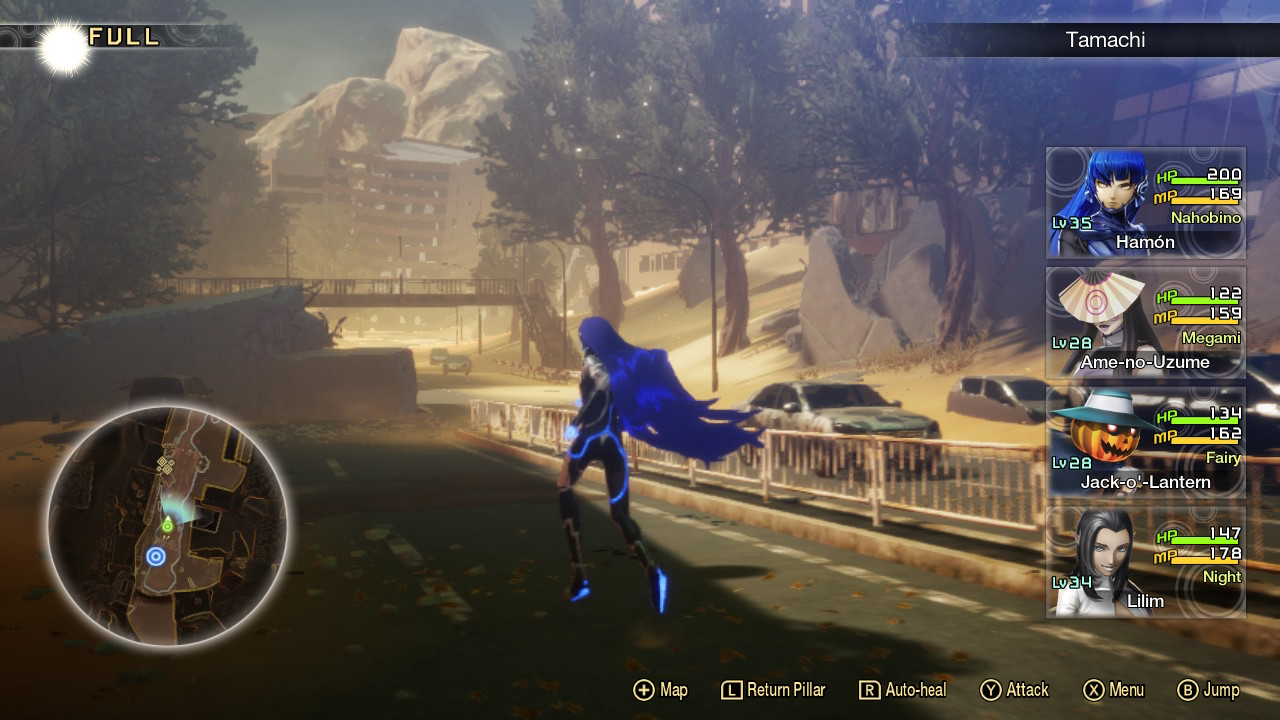

After Atlus’ Persona 5 released in 2017, garnering more mainstream attention than the Shin Megami Tensei franchise ever had up to that point, many wondered how the company would respond to a spin-off of its main series finding so much more success than the main series’ releases. Atlus responded with Shin Megami Tensei V, their latest release in the core Shin Megami Tensei franchise. Amidst countless questions of how Atlus would adapt some of Persona’s elements into the main series, SMT V brings a more quintessentially Shin Megami Tensei experience than ever before.
SMT V has you take the role of a high schooler from Tokyo who gets transported to a desolate realm known as the Netherworld (also called Da’at), where you meet a demon named Aogami, who you quickly merge with into a being called a Nahobino. The game takes place after the death of the Creator God, and the Nahobino follows Bethel, a demon organization, as they try to maintain order in the world as other gods attempt to grab power and the Nahobino’s existence threatens to disrupt Bethel’s authority.
Hopefully, just by that description, you can see the SMT V has a pretty classic Shin Megami Tensei plot. It has a grandiose, world-destroying conflict, where you as a player get pitted against real gods in an effort to defend your values. The game’s story grapples with pretty large-scale issues surrounding power, theology, and other topics that rarely get explored in games.


The gameplay similarly doubles down on the core Shin Megami Tensei formula, blending gameplay mechanics from SMT III: Nocturne and SMT IV into one, cohesive, decisively Shin Megami Tensei package. Players coming to this game from other SMT games will feel very comfortable with the Press Turn system, but if you’re coming just from Persona games it might take a little getting used to. The Press Turn system allows the player one action (represented by a
“Press-Turn Icon”) for each member of their active party (up to four) for each turn, but attacks that target an opponent’s weakness, hit for critical damage, as well as a few other actions, don’t use up the Press-Turn icon, essentially granting the player an additional action. This gives the player up to eight actions a turn, though attacks that miss, get blocked, or repelled can result in losing actions, forcing you to carefully plan out your actions in a fight.
The game also has “Miracles”, which have the same function as the apps from Shin Megami Tensei IV, but also adds an “Essence” system. Unlike the Whispering mechanic from SMT IV, in SMT V you will acquire the “essences” of demons, which are essentially the demons only you cannot fight with them or use them in normal fusions. Instead, you can merge the essences into yourself or other demons to learn new skills from them. The Nahobino can also learn the affinities (the elemental strengths and weaknesses) from essences, and this is the only way that the Nahobino can change their affinities and learn new skills.


Put simply, Shin Megami Tensei V’s gameplay centers around dominating a battle. Especially when it comes to open-world encounters, your main goal is almost always to win the battle before your opponent even has a chance to attack. The game, as would expect, is pretty difficult, but if you keep yourself properly leveled for whatever fight you’re in and make use of the Miracles and Essences systems you can enter most fights ready to annihilate your opponent in very few turns. A lot of the time this is also a pretty essential approach to take, as even random encounters have a high risk of ending you in one turn, and MP is a pretty scarce resource that can become a problem at times (especially during back to back boss battles).
The battle system pulls pretty heavily from past SMT games but the actual open worlds and environments take a much more modern approach than previous games. The game spans four main areas, in addition to Tokyo, where some story moments happen, and all four of the areas are exceptionally well designed. In addition to looking downright gorgeous, especially for a Switch title, the areas have very creative uses of space, and every inch of the maps is carefully designed and very intentionally utilized. Almost all of the story takes place in these open worlds, creating an extremely cohesive experience, though the game has a small handful of dungeons that use more traditional SMT design, which is to say, very boring design. They use the same modular, very square design of the dungeons from games like SMT IV, IV Apocalypse, and Persona 4, which just feels so outdated and dull compared to the complex and fresh level design of the open worlds.


Easily the part of the game that gave me the most grief though was just the length. One of my favorite elements of SMT IV was how fast its pacing was. Especially on the easier difficulties, SMT IV never required much more grinding than you encounter as you explore the world for the story and side quests. SMT V gives the player no such courtesy though, and even on the easiest difficulty (not counting the safety mode you can install as a free DLC), the game will require a lot of grinding. Of course, grinding is a very core element of JRPGs, and especially Shin Megami Tensei games, but especially towards the end of the game, the plot just drags out for far longer than it needs to. By the time you get to the final area of the game, you will have reached more or less the end stage of the plot, but the game will require hours and hours of more grinding and then an entire, all-too-long final dungeon before you can actually finish the game. This artificially lengthens the game past what it needs to be and can make finishing the game actually rather tedious and difficult.
Despite its flaws though, Shin Megami Tensei V brings modern design and ideas to the Shin Megami Tensei formula, and will likely act as a guideline for future main-series titles. The game has extremely engaging gameplay, phenomenal graphics, and a classic SMT story, easily creating one of the best Shin Megami Tensei games yet. I can’t necessarily say that it’s the easiest entry point into the series, considering the amount of grinding required and the slightly more complicated battle/fusion system than other games, but it definitely has a lot to offer, even to people less familiar with the series.
Score: 9 out of 10
Reviewed on Nintendo Switch
Play games, take surveys and take advantage of special offers to help support mxdwn.
Every dollar helps keep the content you love coming every single day.
